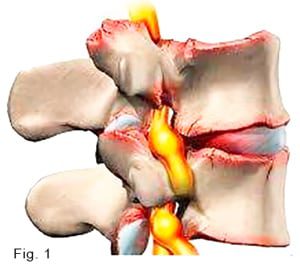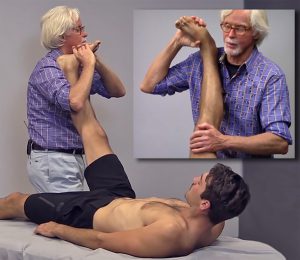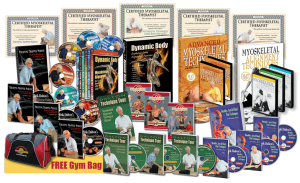The following is an excerpt written by Thomas Myers from chapter #10 of Erik Dalton’s book, Dynamic Body: Exploring Form Expanding Function, which features guest contributions from some of the leading thought leaders and practitioners in the massage profession. The rest of the chapter can be read in the Dynamic Body textbook, available as part of the Dynamic Lower Body home study course or as a standalone purchase.
The Double-Bag Theory
Imagine a water balloon half-filled with an electrically sensitive jelly (muscle). Put a couple of cylindrical objects on it, such as short dowels or marker pens (bones), end to end. Now push the cylinders into the balloon until it comes up around them and encloses them (Image 1). Your musculoskeletal system, seen as a whole, is wrapped up in something like this. The part adhering to the cylinders is like the periosteum around the bones. In the space between the “bones,” this part of the balloon is like the ligamentous capsule of the joints, which thickens into specific ligaments as required by the forces acting on it. The outer part of the balloon is like the superficial fascial leotard (or, in medical parlance, the deep investing fascia). The part of the balloon where the two ends of the balloon meet (as in the right side of Image 1.B) represents the intermuscular septa, which are similarly double-layered walls that run from the superficial fascia to the periosteum. Seen in this way, the periosteum-joint capsule “inner bag” is filled with hard bone alternating very soft joint tissues and fluid.
The outer bag is filled with muscle and varying densities of fascia. In order to make the two bags interact successfully to move us around, we simply come along with a soldering iron and heat seal the outer bag down onto the inner in specific places, making what we call a muscle attachment. With this image, we get away from the shibboleth that there are some six hundred muscles in the body. There is, in fact, only one muscle. One mind, and one muscle – it just hangs around in six hundred pockets within the unitary fascial bag. It is a struggle, I know, to rise above this concept of individual muscles, but the view from the mountain of wholeness is breathtaking.
Seen through this lens, the myofascial meridians simply track the warp and weft through this outer bag of myofascial webbing. Where does this webbing continue in straight lines – lines that can transmit forces that travel out from their local areas to create global effects via the interconnectedness of this overall double bag? The answer to this question provides a map for tracking strain transmission throughout this system. How we move and are moved during our lives shapes this web, and the shape of the web, in turn, helps to determine our experience of living in our bodies.
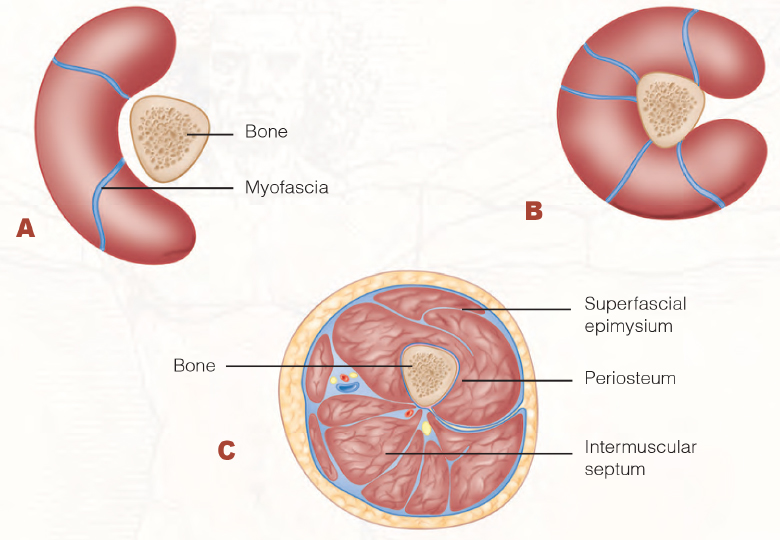
Tensegrity
One other holistic image is necessary to jump out of this “machine made out of parts” image so ingrained in our systems – tensegrity geometry. The normal geometric picture of our anatomy is that the skeleton is a continuous compression framework, like a crane or a stack of blocks, and the muscles hang from it like the cables. This leads to the single muscle theory again – the skeleton is stable but moveable, and we parse out what each muscle does to that framework on its own, adding them together to analyze the movement. A little thought, however, soon puts this idea out to pasture. Take the muscles away, and the skeleton is anything but stable; take all the soft-tissue away and the bones would clatter to the floor, as they do not interlock or stack in any kind of stable way.
If we can get away from the idea that bones are like girders, and muscles are the cables that move the girders, we are led to a class of structures called “tensegrity” (the integrity lies in the balance of tension) Image 2. Originated by Kenneth Snelson and developed by Buckminster Fuller, tensegrity geometry more closely approximates the body as we live and feel it than does the old “crane” model. In the dance of stability and mobility that is a human moving, the bones and cartilage are clearly compression-resisting struts that push outward against the myofascial net. The net, in turn, is always tensional, always trying to pull inward toward the center. Both elements are necessary for stability, and both contribute to practical mobility.
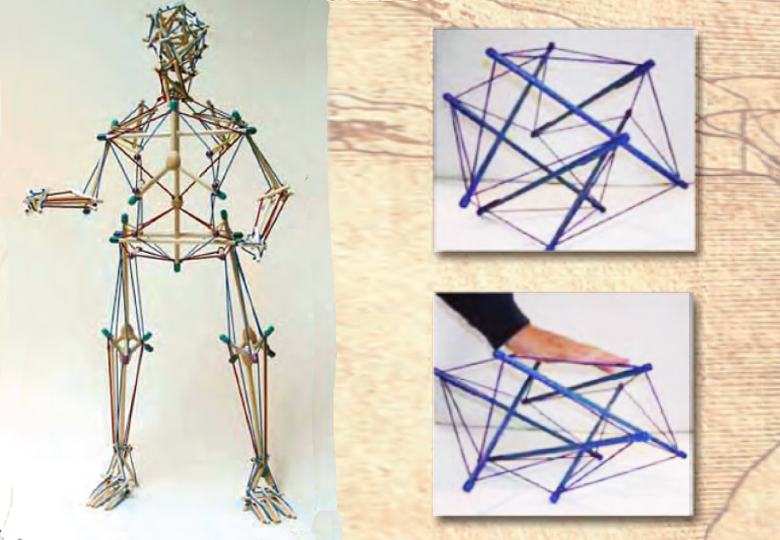
In this new orthopedic model, the boney struts “float” within the sea of tension provided by the soft tissues. The position of the bones is thus dependent on the tensional balance among these soft-tissue elements. This model is of great importance in seeing the larger potential of soft- tissue approaches to structure, in that boney position and posture is far more dependent on soft-tissue balance than on any high-velocity thrusting of bones back into “alignment.” In this view, the Anatomy Trains Myofascial Meridians map the global lines of tension that traverse the entire body’s muscular surface, acting to keep the skeleton in shape, guide the available tracks for movement, and coordinate global postural patterns. Research supports the idea of tensegrity geometry ruling mechanical transmission from the cellular level on up, and macro-level models, such as the one in Image 1., are becoming more anatomically accurate.
About the author
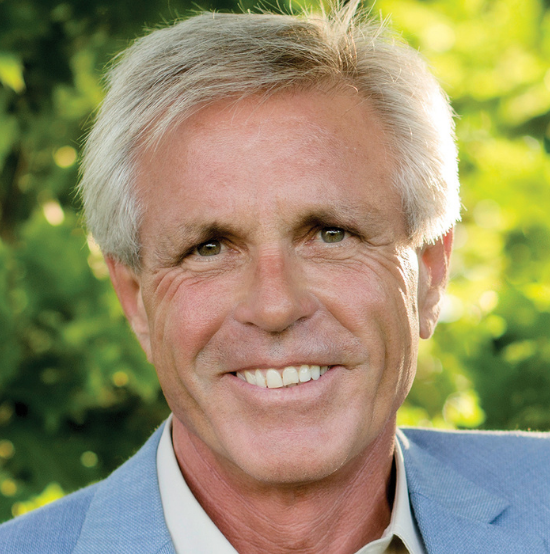
Thomas Myers studied with Drs Ida Rolf, Moshe Feldenkrais, and Buckminster Fuller. He has also benefited from studying movement meditation, biomechanics, and the martial arts. Myers is the author of Anatomy Trains (Elsevier 2001, 2009, 2013) and multiple supporting videos, as well as 100 articles on anatomy and soft tissue manipulation and the social scourge of somatic alienation that replaces kinesthetic intelligence. In practice for nearly 40 years in various clinical and cultural settings, Tom is a member of the International Association of Structural Integrators and a certified Touch-in-Parenting instructor with a strong interest in perinatal issues. Myers lives on the coast of Maine, where he directs online and in-person professional certification and continuing education courses for manual therapists and movement educators worldwide. www.anatomytrains.com
On sale this week only!
Save 25% off the "Dalton Technique Treasures" eCourse
The “Dalton Technique Treasures” eLearning course is a compilation of some of Erik’s favorite Myoskeletal Alignment Techniques (MAT). Learn MAT techniques to assess and address specific sports injuries, structural misalignment, nervous system overload, and overuse conditions. ON SALE UNTIL April 29th! Get Lifetime Access: As in all our eLearning courses, you get easy access to the course online and there is no expiry date.





